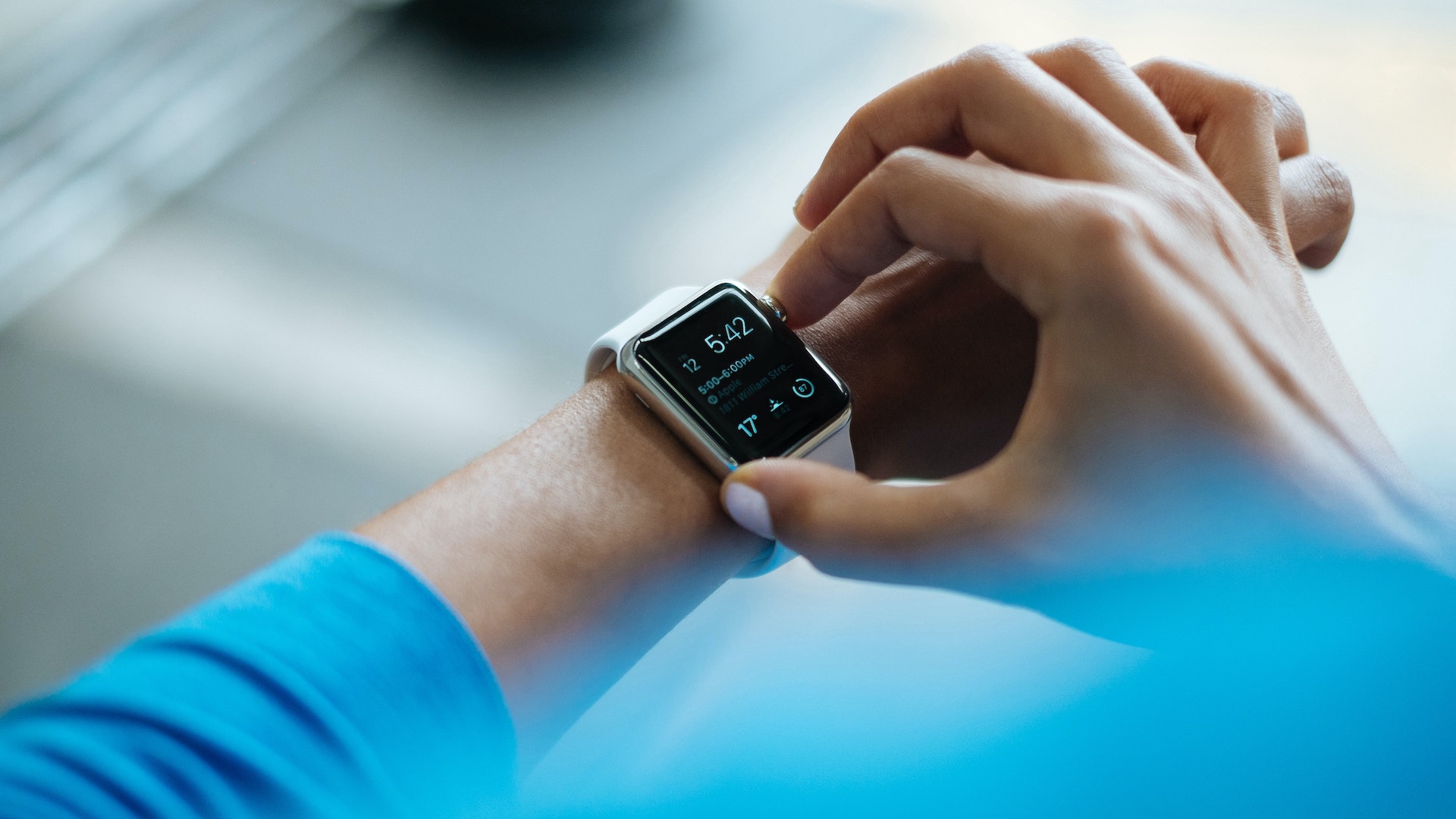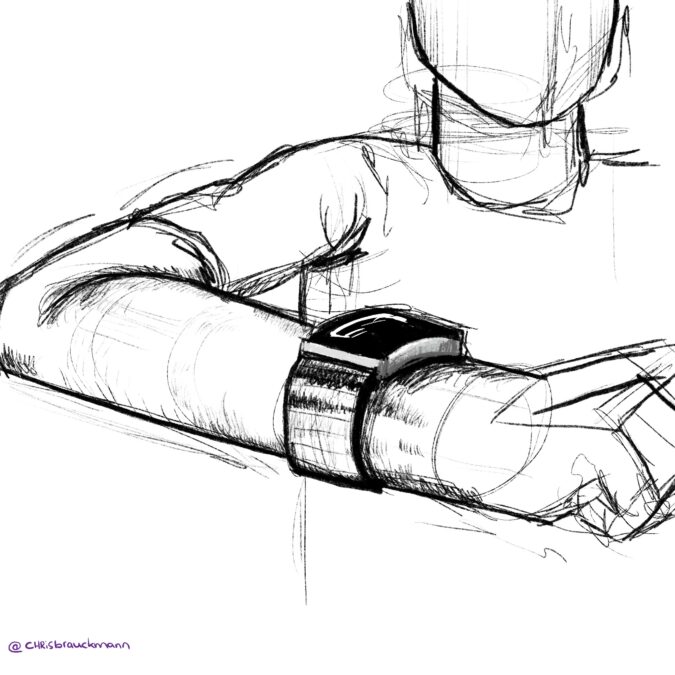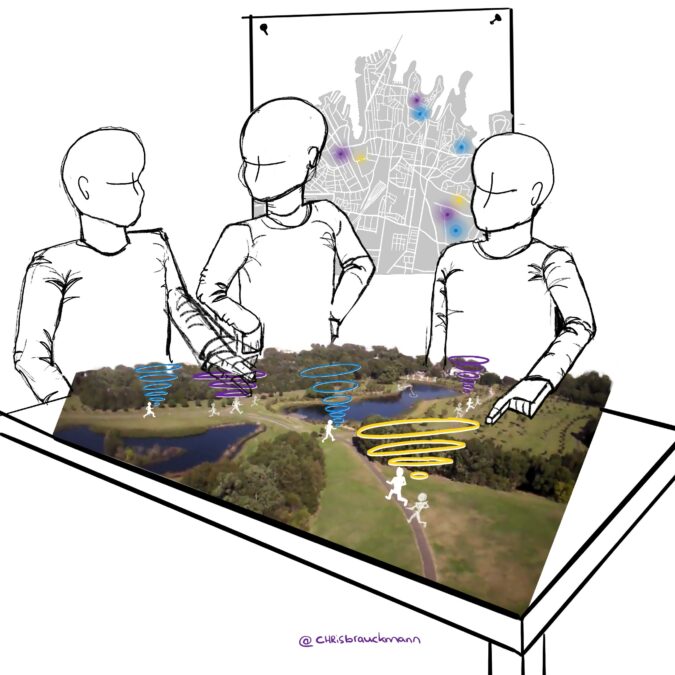Ella Hafermalz, Robert Johnston, Dirk Hovorka and Kai Riemer

Moving with technology
How mobile technologies are not just portable computers – they change how we see and act in the world (and even shape it).

As I neared the lake my pace began to quicken. iPhone in hand, headphones in ears, I weaved oblivious past walkers and their dogs. The surrounding parkland a blur, my only focus was on the path ahead, until the lake disappeared again. Then I returned to a plodding pace, slower than usual. This new and unintended shift in pace and perception as I moved around the lake returned on subsequent runs. What was behind it..?
People are becoming ‘digital trace-makers’
Mobile technologies are often thought of as portable screens. But they are more than that. Moving around with mobile technology can change how we see and act in the world. People are becoming ‘digital trace-makers’ who inhabit ‘digital niches’ that non-users can’t even see.
Take for example running around a park with the exercise tracking application Strava. When you start a segment, you speed up, and actually see the environment differently – focused on competition instead of on the sunset. People who aren’t using the app can’t see that anything has changed, but for Strava competitors that stretch of path invites extra effort.
It is important that we realise that mobile technology is fundamentally becoming part of how people see and move around in the world. Especially in this upcoming age of contact-tracing apps, there is a need to understand how people’s capacity to leave digital traces as they move around impacts their behaviour, their self-perception, the groups they belong to, and even the environment.
We make the argument for this new way of thinking about mobile technology in a recently published paper “Beyond Mobility: A new understanding of moving-with-technology” in Information Systems Journal, by Ella Hafermalz from Vrije Universiteit Amsterdam, and Robert B. Johnston, Dirk S. Hovorka, and Kai Riemer from The University of Sydney Business School.
Movement is important for perception
We use an ecological theory of visual perception to explain why a runner starts to see and move differently after using the exercise tracking application Strava. This theory comes from the ecological psychologist William Gibson. In the 1970s he put forward a radically new theory on how people (and animals) see – in an active way, by moving around the environment. This contrasted with popular theories of vision that studied perception from a static position. Gibson pointed out that animals are only still when they’re sleeping or dead! The rest of the time they are constantly moving their eyes, heads, and bodies.
Gibson’s insight that movement is important for perception inspired us to think differently about mobile technology. People don’t just use mobile devices while sitting still – they move with their devices. But what difference does this make?
Moving with technology
In our paper we ‘problematise’ a surprise experience by the lead author, Ella. The surprise was that she started to move and see a part of her run in the park – around a lake – differently because Strava had put her into competition with other runners who used Strava.
Even though she wasn’t looking at Strava while running, she was looking with the app – seeing the path around the lake as a place to compete against other runners-with-Strava. This shift in perception is more fundamental than just ‘using’ mobile technology for a specified task in a novel location. Moving-with-technology led the runner to see herself and her environment differently.
Shaping the environment
Moving around with such mobile apps also makes us digital trace-makers. When moving-with-technology we are leaving a trail of data that maps our movements. These digital traces are in the case of Strava compiled and aggregated for sale. For example Strava sells ‘heat maps‘ of activity to city planners who use it to change urban infrastructure.
This is how digital trace-making creates what we call ‘ecological feedback loops’, where moving-with-technology shapes the very environment we move through.

In the coming period where mobile apps are seen as the solution to COVID-19 lockdown, our ability to be digital trace-makers becomes even more relevant. What kind of world will we perceive, and create, while moving-with-technology?
Our hope is that researchers will move ‘beyond mobility’ when studying mobile technologies. People need to become aware that they are often trace-makers. We need to realise that mobile technologies are changing who we are, how we move around, the communities we belong to, and they are even shaping our environment, for better or worse.
We encourage you to think about: What happens if planners reinforce a group’s ‘digital niche’ through ecological feedback loops? Can you stop seeing yourself, and your environment, as a runner-with-Strava? What new mobile methods are needed to capture technology on the move?
Read the paper for more insights, and share your thoughts with us!
Hafermalz, E, Johnston, RB, Hovorka, DS, Riemer, K. Beyond ‘mobility’: A new understanding of moving with technology. Info Systems J. 2020; 1–25. https://onlinelibrary.wiley.com/doi/full/10.1111/isj.12283?af=R
This article was originally published by the KIN Center for Digital Innovation. Read the original article.
Illustrations by Christine Brauckmann.
Ella Hafermalz is an Associate Professor at VU Amsterdam's School of Business and Economics and the KIN Center for Digital Innovation. Her research focuses on how new technologies are being integrated in the workplace.
Robert is a Professor of Business Information Systems at The University of Sydney Business School. His research interests include ICT-enabled organisational innovation and IT appropriation.
Dirk S. Hovorka is an Associate Professor in the Business Information Systems discipline at The University of Sydney Business School. He holds as MS in Geology and an MS in Interdisciplinary Telecommunications, and received his PhD in Information Systems from the University of Colorado.
Kai Riemer is Professor of Information Technology and Organisation, and Director of Sydney Executive Plus at the University of Sydney Business School. Kai's research interest is in Disruptive Technologies, Enterprise Social Media, Virtual Work, Collaborative Technologies and the Philosophy of Technology.
Share
We believe in open and honest access to knowledge. We use a Creative Commons Attribution NoDerivatives licence for our articles and podcasts, so you can republish them for free, online or in print.







